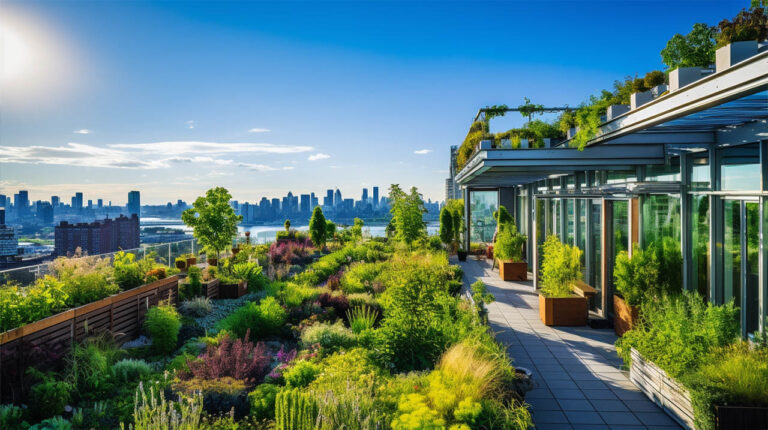Rooftop gardens are not just a contemporary trend; they represent a significant shift in urban living, offering a plethora of benefits that range from environmental to aesthetic. As urban areas become more congested, the need for green spaces becomes paramount. Rooftop gardens provide a solution that is both functional and beautiful.
The Rise of Urban Agriculture
Urban agriculture, especially in the form of rooftop gardens, has seen a surge in popularity in recent years. These gardens offer city dwellers the opportunity to cultivate vegetables, herbs, and flowers, providing a refreshing escape from the concrete jungle. Unlike traditional community gardens, rooftop gardens utilize space that would otherwise go unused, making them an efficient choice for urban areas.
While many might conflate “green roofs” with rooftop gardens, it’s essential to distinguish between the two. Green roofs are a construction technique that involves covering a building’s roof with vegetation, whereas rooftop gardens specifically refer to spaces dedicated to urban agriculture.
Overcoming the Challenges
Growing crops on rooftops comes with its set of challenges. The absence of natural shade and the intensity of sunlight can lead to excessive heat, making it crucial to select plants that can thrive in such conditions. Additionally, rooftops often experience higher wind speeds, which can stress plants. However, with the right precautions, such as using windbreakers, these challenges can be mitigated.
Like their ground-level counterparts, rooftop plants require water, quality soil, and fertilizer. Ensuring a consistent water supply and managing runoff effectively is crucial. Many rooftop gardens employ recirculation systems to capture and reuse water, making the process more sustainable.
Benefits Beyond Beauty
Rooftop gardens offer more than just aesthetic appeal:
- Heat Regulation: During summer, rooftops absorb sunlight, increasing both external and internal temperatures. A garden can shade the roof, reducing heat retention and cooling the surrounding air, which can be particularly beneficial for companies like TecHero Roofing that understand the intricacies of urban roofing.
- Managing Rainfall: In cities, rainwater runoff can be a significant issue. Plants in rooftop gardens utilize this water, reducing the amount that ends up in storm drains.
- Local Produce: With the rising demand for locally-sourced food, rooftop gardens can play a pivotal role. They allow for the cultivation of fresh produce throughout the year, catering to the needs of the community. This is especially relevant for places like Santa Barbara, where the emphasis on sustainability is evident.
TecHero Roofing and the Future of Rooftop Gardens
As a leader in the Santa Barbara roofing industry, TecHero Roofing recognizes the potential of rooftop gardens. By integrating these gardens into roofing solutions, the company not only enhances the aesthetic appeal of buildings but also contributes to a more sustainable urban future.
For those in Santa Barbara seeking a roofing service in Santa Barbara that understands the nuances of urban living and the benefits of rooftop gardens, TecHero Roofing is the go-to choice. With their expertise, the dream of a greener, more sustainable urban landscape is within reach.
Conclusion
Rooftop gardens are more than just a trend; they are a testament to the evolving nature of urban living. By embracing these gardens, cities can enjoy cleaner air, reduced heat, and a closer connection to nature. As urban areas continue to grow, the importance of such green spaces will only become more pronounced, making rooftop gardens an essential component of future urban planning.


